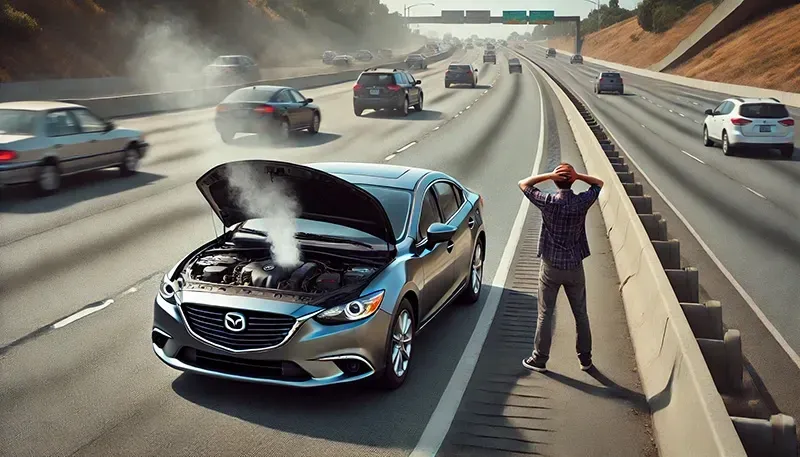How to Avoid Buying a Lemon
Red Flags You Need to Look Out For in Used Cars
February 1, 2025

Discover essential tips to avoid buying a lemon when shopping for a used car. Learn how to spot red flags, inspect thoroughly, and make a confident purchase decision!
Buying a used car can be a brilliant way to save money—or a fast track to financial regret. There’s nothing worse than driving home in what you thought was a great deal, only to realise you’ve bought a lemon. You know, the kind of car that spends more time in the garage than on the road, draining your wallet and your patience.
The good news? You don’t need to be a mechanic to spot the warning signs. If you know what to look for, you can dodge the dodgy deals and make sure your next used car is a smart buy. Here’s your guide to spotting the red flags in used cars before you sign on the dotted line.
1. The Price Seems Too Good to Be True
If a deal looks too good, it probably is. Sure, everyone loves a bargain, but ridiculously low prices often mean there’s something lurking beneath the surface. If the seller is pushing a car for thousands less than its market value, ask yourself why.
Red Flags:
🚩 Seller is vague or dodges questions about the car’s history
🚩 Excuses like "just need a quick sale" or "moving overseas tomorrow"
🚩 Refusal to provide service records or inspection reports
Do your research—compare prices for similar makes, models, and years. If this one’s way cheaper, there's likely a reason, and it's not a good one.
2. Sketchy Vehicle History
A car with a mysterious past is a risky buy. Always check its history report (in Australia, you can do this via the PPSR check) to uncover:
- Past accidents or major repairs
- Outstanding finance (you don’t want to inherit someone else’s debt)
- Odometer rollbacks (yes, it still happens!)
- Whether the car has been written off
Red Flags:
🚩 Seller claims they “lost” the service logbook
🚩 Multiple ownership changes in a short period
🚩 Interstate registration history (it might have been shipped to hide its past)
A proper vehicle history check costs $20-$30 but can save you thousands. Always get one before committing.
3. Obvious (or Hidden) Mechanical Issues
A car that looks spotless on the outside can still be a mechanical disaster underneath. Always take the time to check key components before buying.
Under the Bonnet:
- Pull the dipstick and check the oil—thick, dark sludge is a bad sign
- Look for coolant leaks, frayed belts, and corroded battery terminals
- Start the car and listen—knocking, tapping, or excessive rattling isn’t normal
Under the Car:
- Look for rust, oil leaks, or signs of poor repairs
- Check for uneven tyre wear, which could indicate alignment or suspension issues
During the Test Drive:
- Pay attention to strange noises, vibrations, or sluggish acceleration
- Check that the transmission shifts smoothly—hesitation or clunking is a bad sign
- Does the steering feel tight and responsive? Wandering or pulling could mean suspension issues
If something feels off, trust your instincts. Better yet, get a pre-purchase inspection from a trusted mechanic.

4. Suspicious Paintwork or Poor Repairs
A fresh coat of paint can hide a world of sins. Sellers sometimes use quick resprays to mask past accidents, rust, or repairs.
What to Look For:
- Mismatched paint colours or textures across panels
- Uneven panel gaps (suggests accident damage and poor repairs)
- Overspray on door seals, under the bonnet, or in wheel wells
- Bubbles or cracks in the paint—could be hiding rust
If you suspect past accident damage, ask for a professional opinion before buying.
5. Odometer Tampering
Odometer rollback is one of the oldest car scams in the book, and unfortunately, it still happens. Modern digital odometers can be manipulated just as easily as old-school analogue ones.
How to Spot a Tampered Odometer:
- Worn-out seats, steering wheel, and pedals that don’t match a “low mileage” claim
- Inconsistent service records or suspiciously low mileage between logbook entries
- Dash lights that flicker or don’t work—tampered odometers can trigger electrical issues
If the mileage seems too good to be true, cross-check it with the car’s service history.
6. Electrical Gremlins
Electrical issues can be a nightmare, and they’re not always immediately obvious. Take the time to test everything.
Checklist:
- Do all dashboard warning lights turn on (and off) when you start the car?
- Test power windows, locks, indicators, headlights, and interior lights
- Check the infotainment system, air conditioning, and reverse camera
- Inspect for flickering lights or erratic gauge movements
If a seller shrugs off a dead battery or a random warning light, walk away. Small electrical issues can signal much bigger problems.
7. Shady Sellers and Dodgy Dealers
A reputable private seller or dealership will be upfront about a car’s history. A dodgy seller? Not so much.
Red Flags:
- Reluctance to meet at their home or a proper location (suggests a curb stoner—someone selling cars illegally)
- Inconsistent answers or evasive behaviour
- Pressure tactics like "I have another buyer coming in an hour"
- Refusal to allow a pre-purchase inspection
8. A Missing or Stolen VIN
The Vehicle Identification Number (VIN) is crucial for checking a car’s history. Always make sure it matches across all documents and that it hasn’t been tampered with.
Check These Locations for the VIN:
- Bottom of the windscreen
- Door frame/sticker
- Under the bonnet (often near the firewall)
Red Flags:
🚩 Scratched-off or missing VIN
🚩 A VIN that doesn’t match the rego papers
🚩 Excuses like "It’s been repainted and the sticker got damaged"
If the VIN isn’t clear, walk away—it could be stolen or have a shady past.
Final Thoughts: Don’t Get Burned
Buying a used car doesn’t have to be a gamble. If you keep an eye out for these red flags, you can avoid buying a lemon and find a car that’s reliable, safe, and worth every dollar.
Before You Buy:
✅ Get a PPSR Check to uncover hidden history
✅ Inspect the car thoroughly in good daylight
✅ Test drive it properly—on different roads and at different speeds
✅ Take it to a mechanic for a pre-purchase inspection
✅ Trust your gut—if something feels off, walk away
A good deal is only good if the car doesn’t turn into a money pit. Be patient, do your research, and remember: the right car is out there—you just have to find it.







